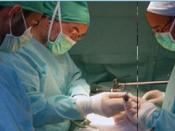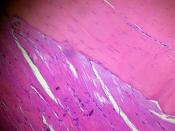Artificial Organs The September 1995 issue of Scientific American included this article on artificial organs. This article did not discuss the possibilities with cloning but it discussed the potential of spinning biodegradable plastic into scaffolding beds that mimic structures of specific tissues. But first, the article deals with an artificial pancreas. There is technology called an external glucose sensor that might be worn as a watch. This would measure the amount of glucose in the bloodstream. If the levels got too low, the sensors coupled with microprocessors could pass insulin through the skin into the bloodstream. This is a good invention because it helps those who cannot get a pancreas. With these inventions like the glucose sensor and the pacemaker, artificial organs have allowed many to live happy healthy lives.
Now we come back to the point mentioned in the first paragraph. The biodegradable plastic would be spun with chemicals that help the artificial tissue to multiply.
As cells divide and assemble, the plastic degrades and only coherent tissue remains. This new permanent tissue would then be implanted into the patient. This procedure implanted into the patient. This procedure will hopefully be used to construct arms and legs.
This research is very valuable to those patients who need an organ transplant. Many people die waiting for a transplant and this technology will help ease much hurt and pain that families experience during transplant situations. The economic effects are great products will be greatly successful.
In closing, I believe these advances are good for society and the world. One thing people fear is getting a terminal illness. With these breakthroughs we are able to relax and not fear as much.


